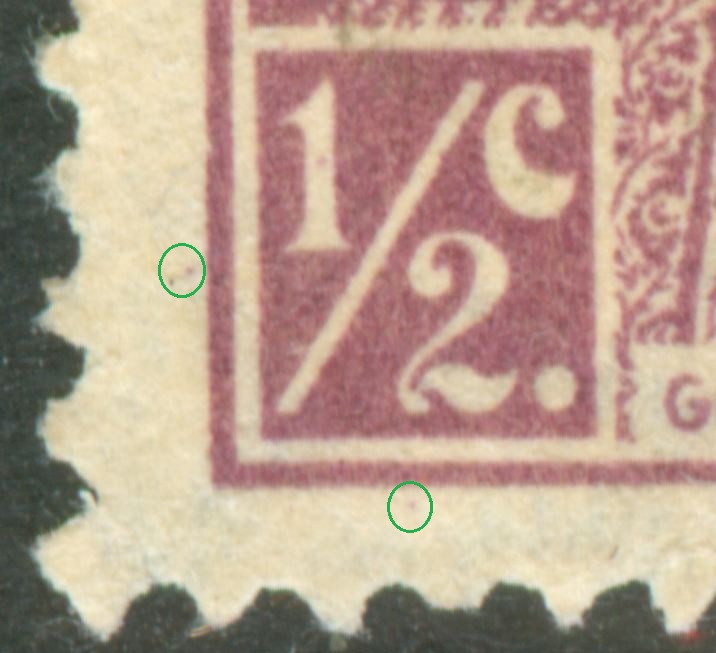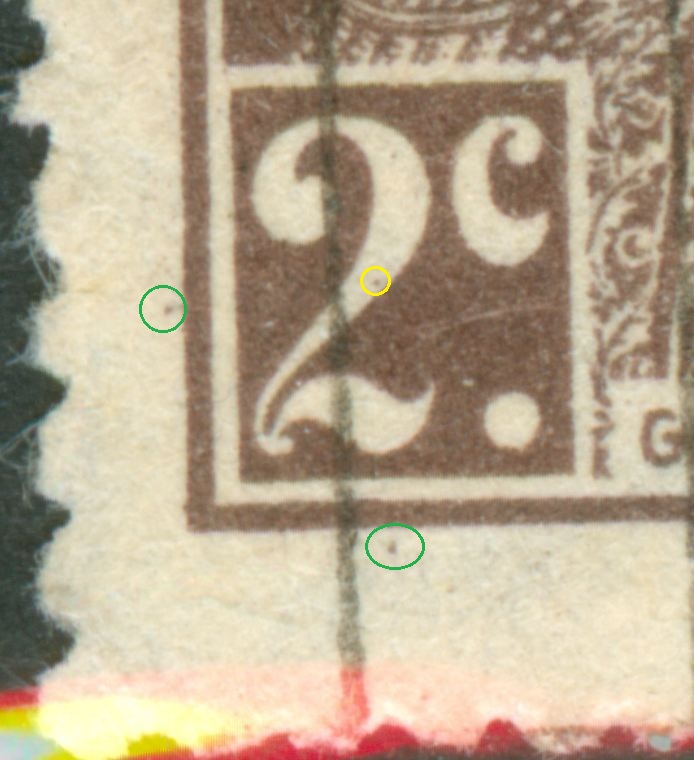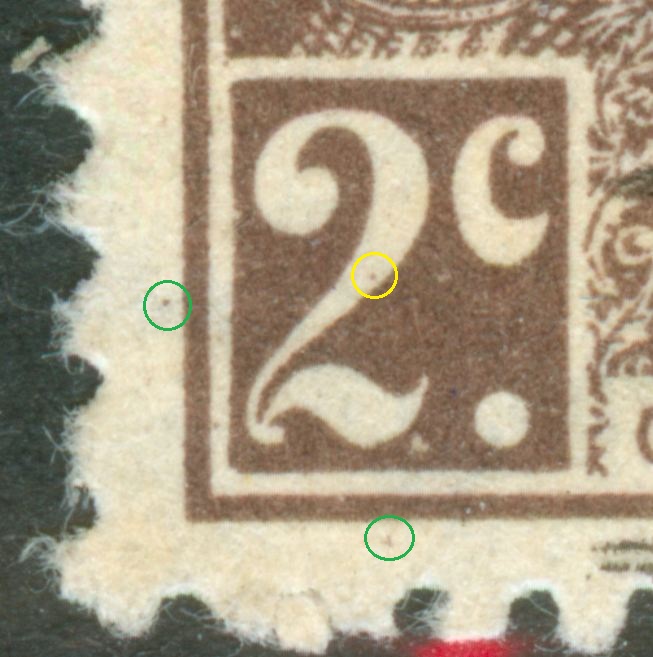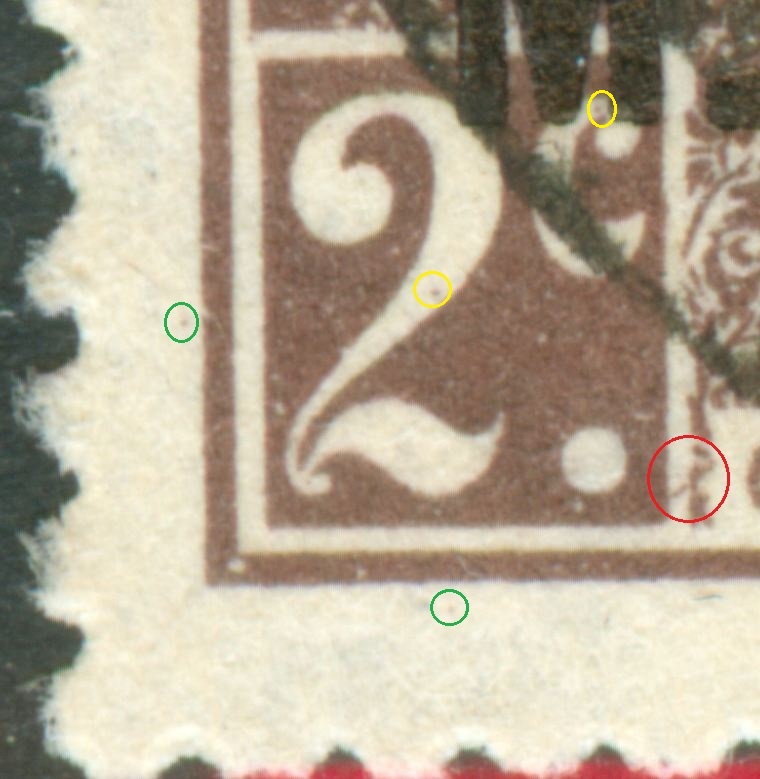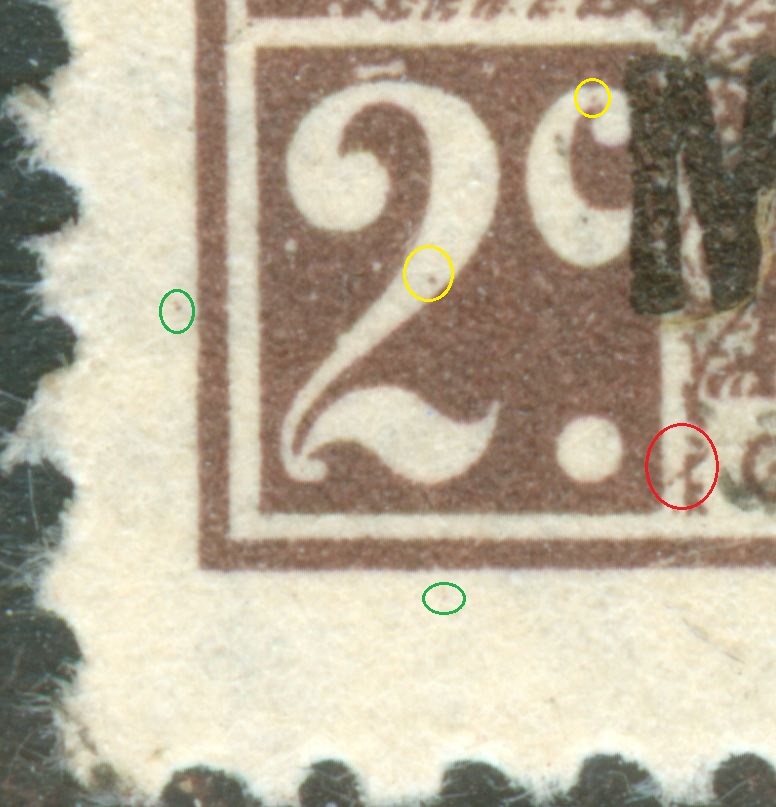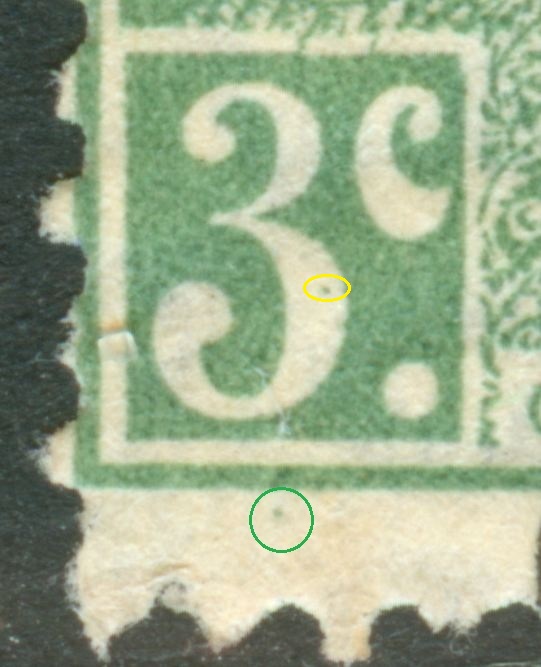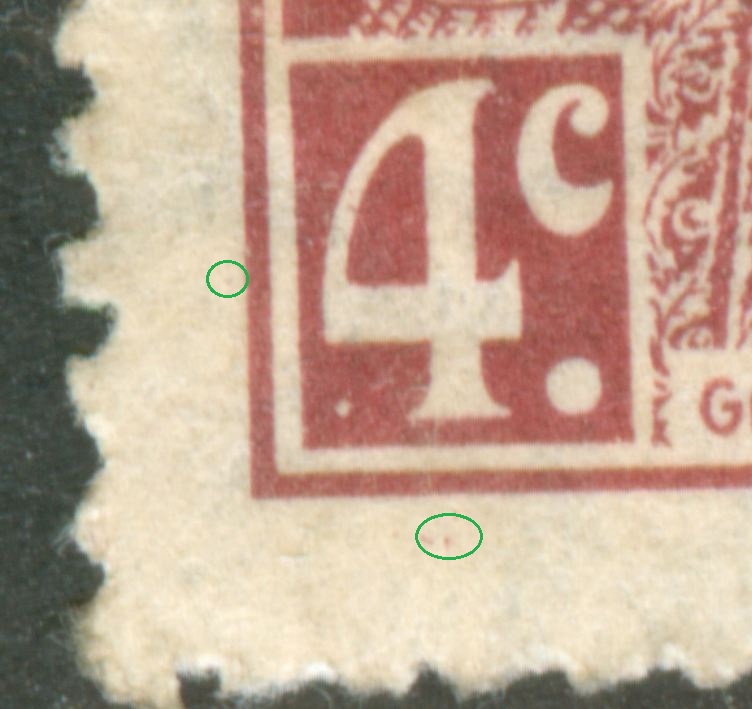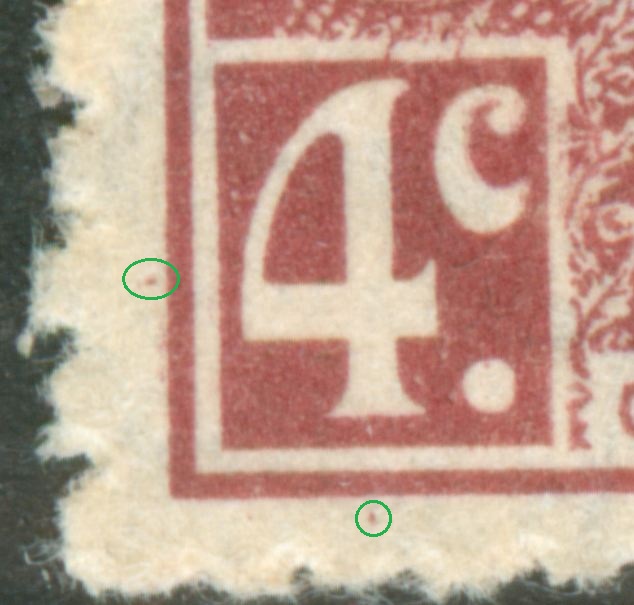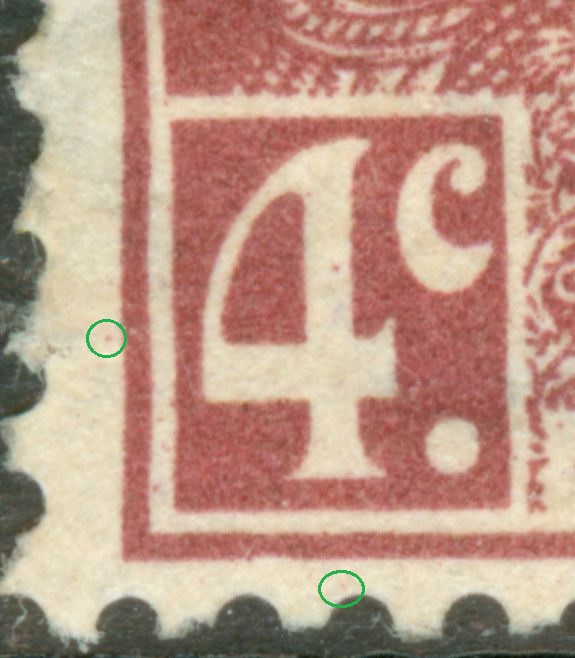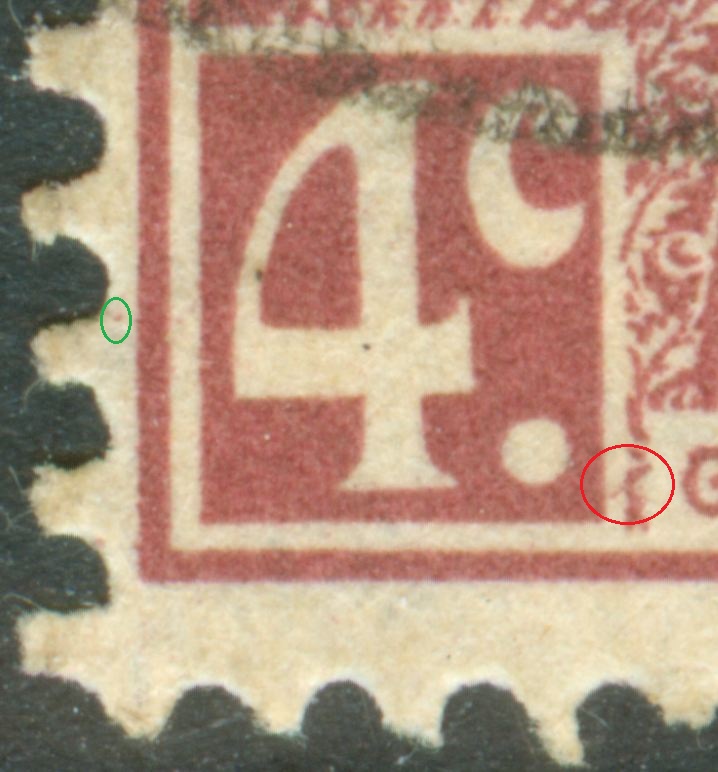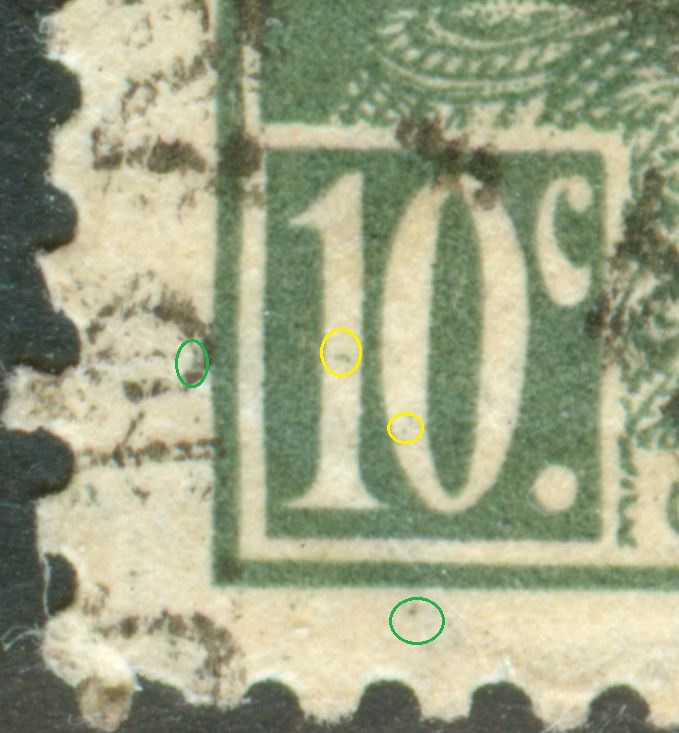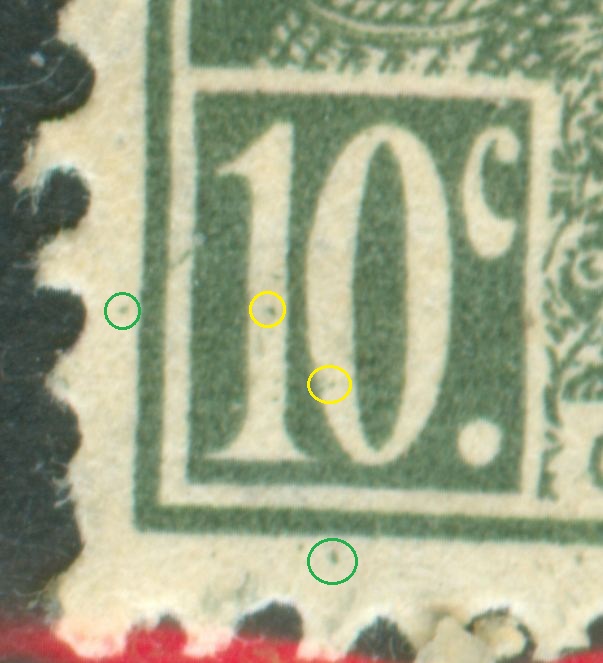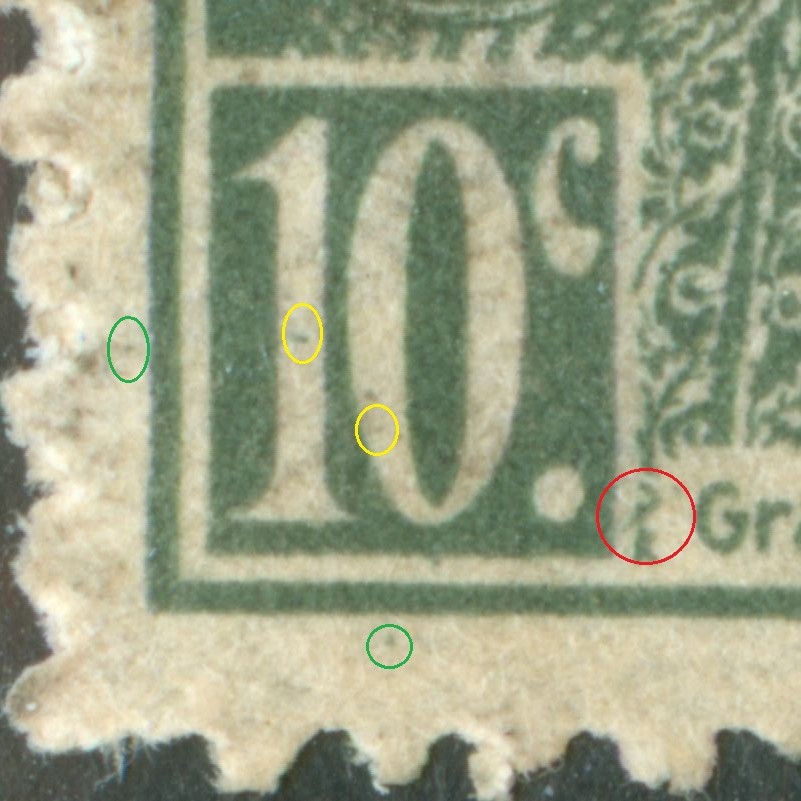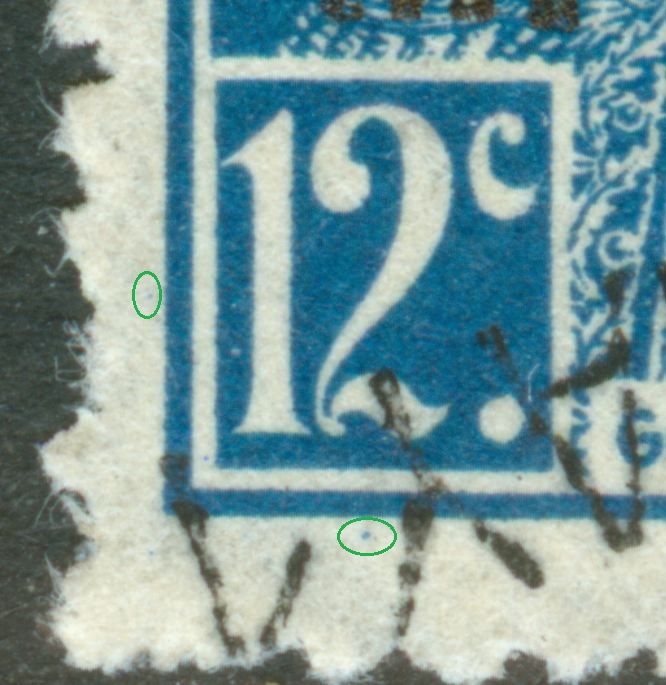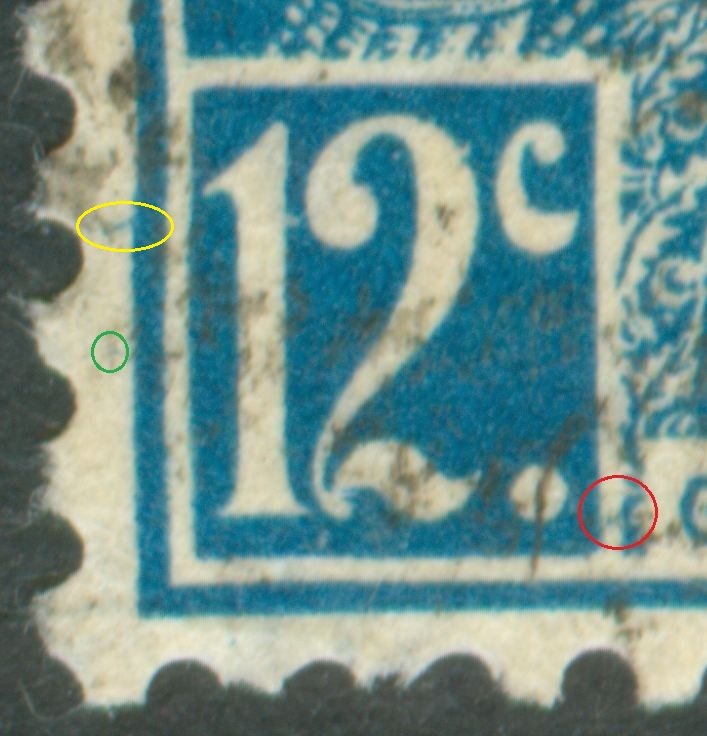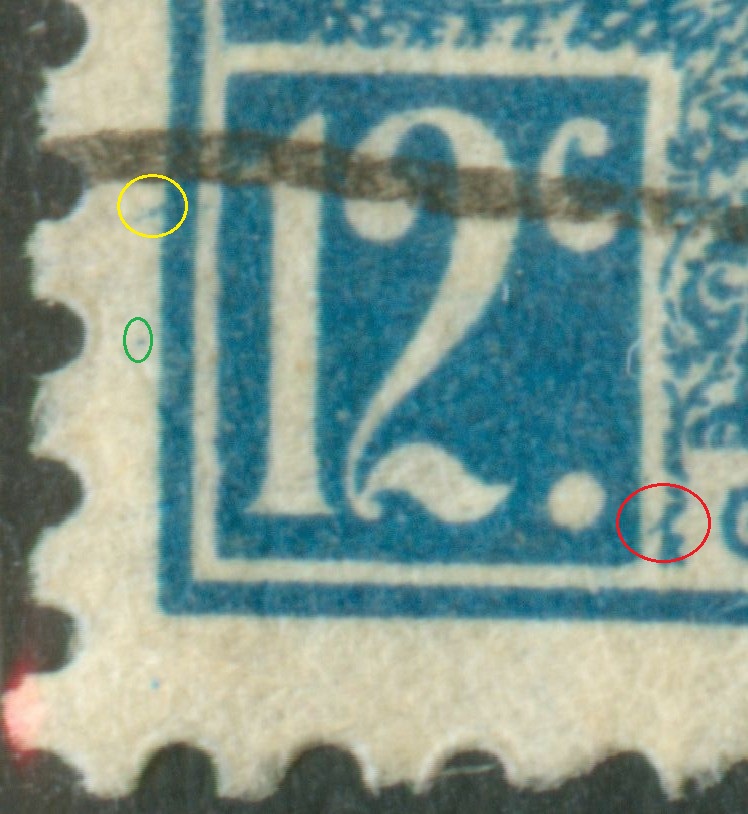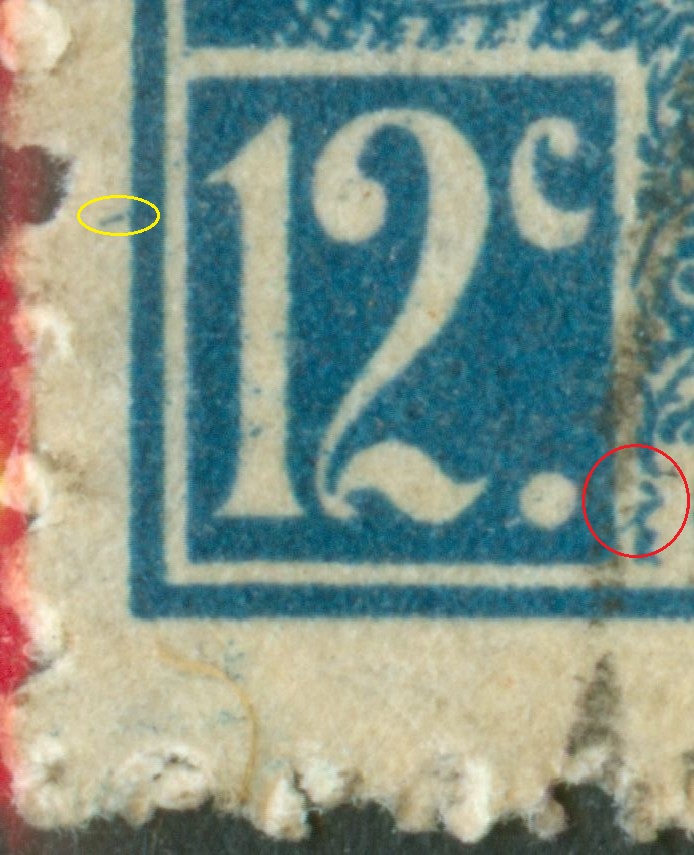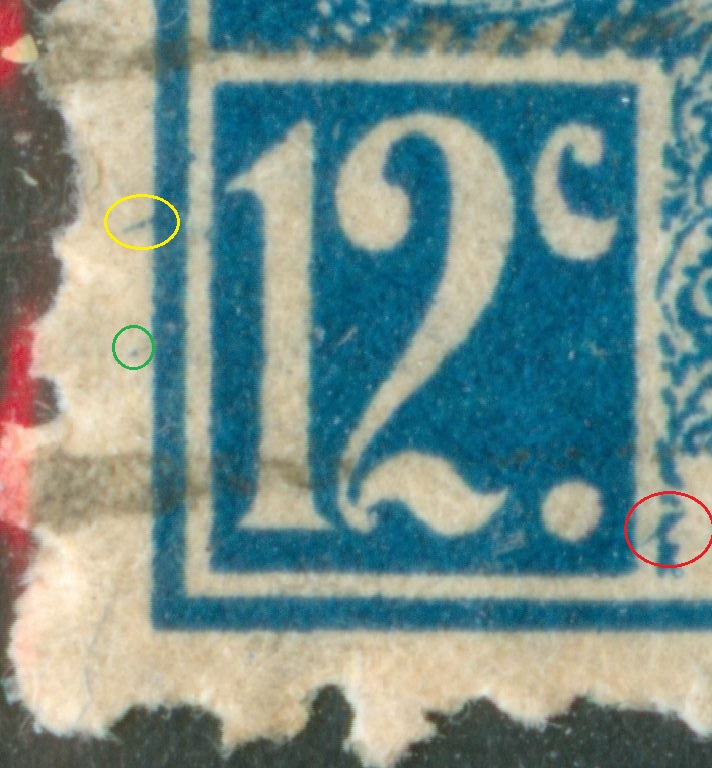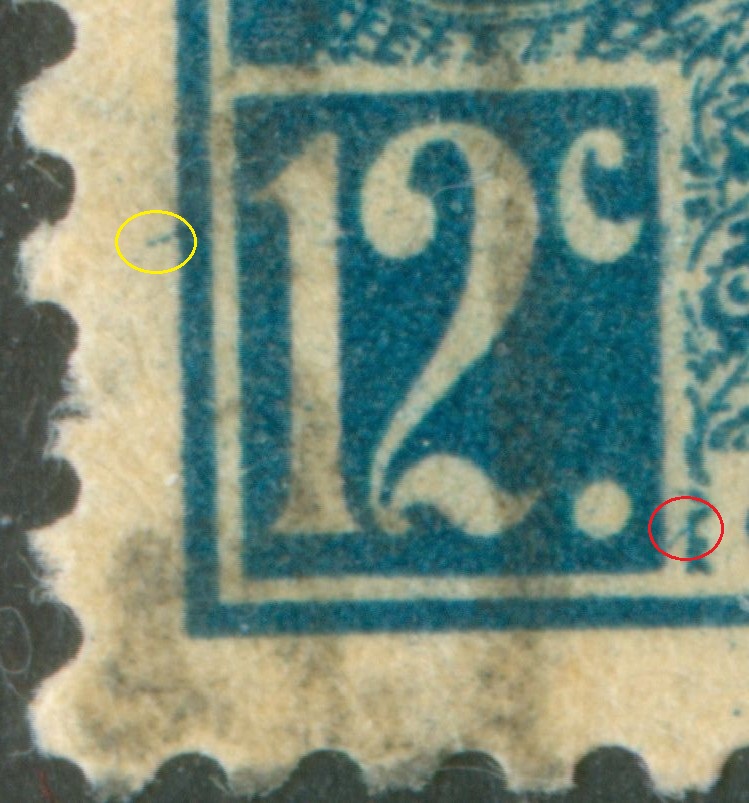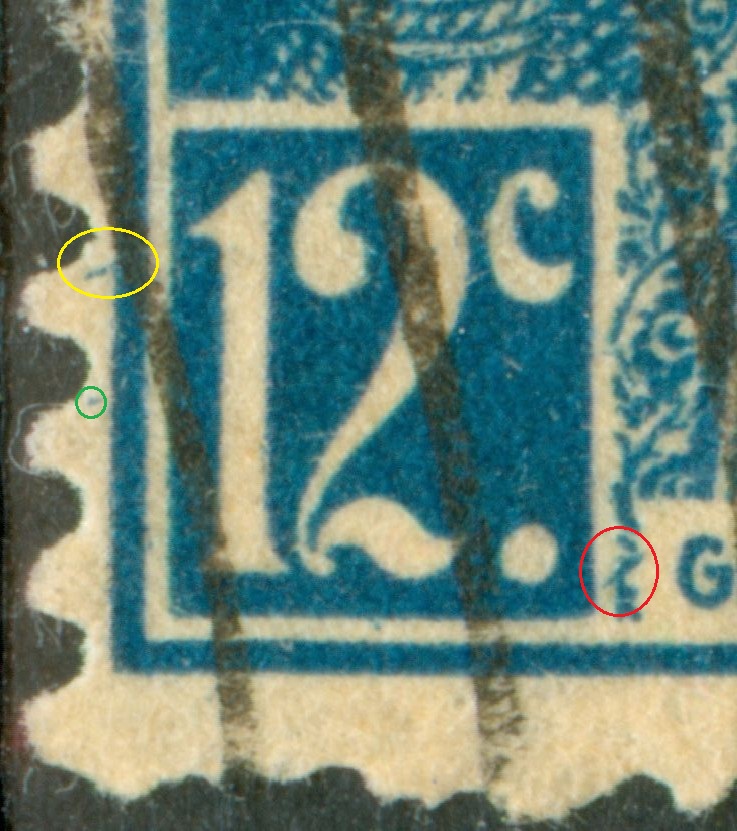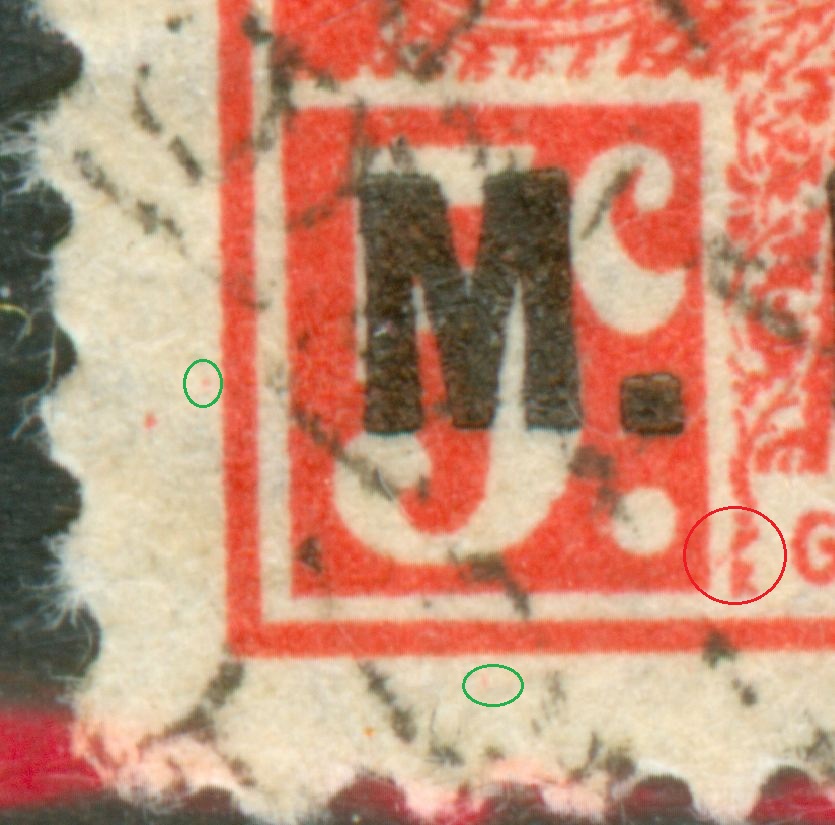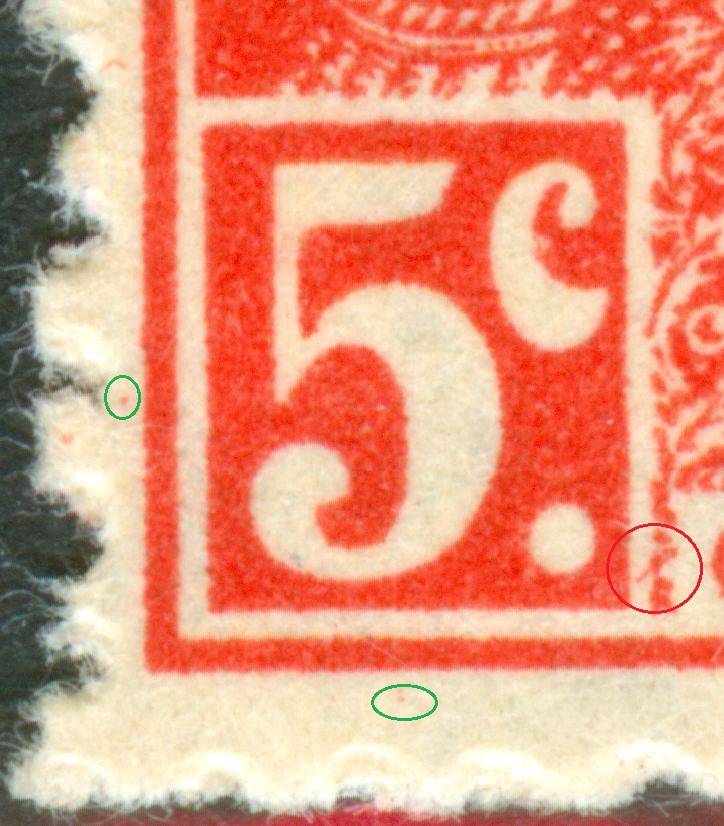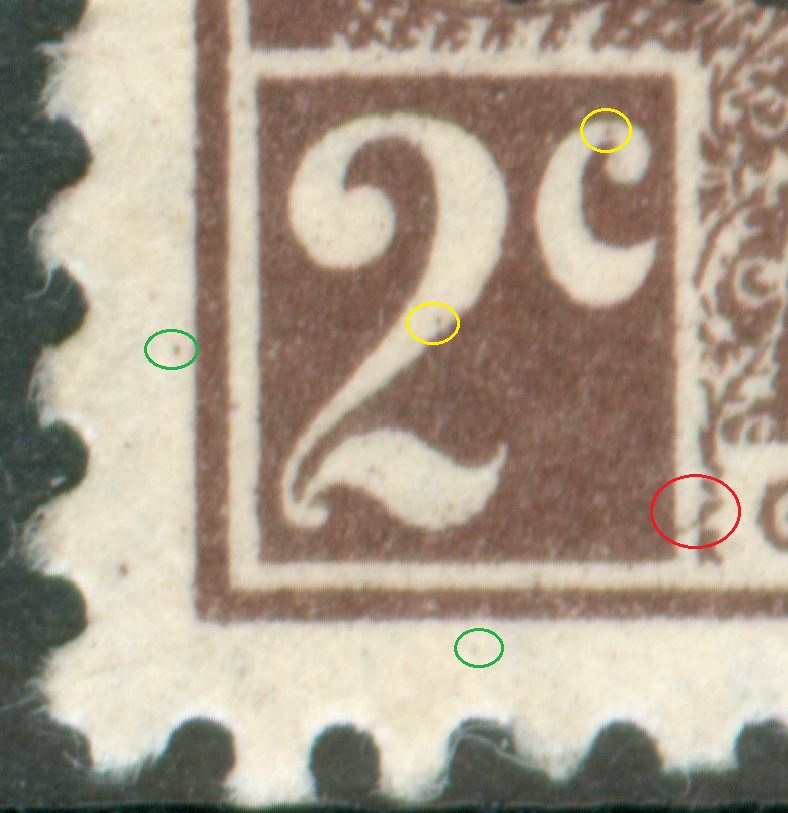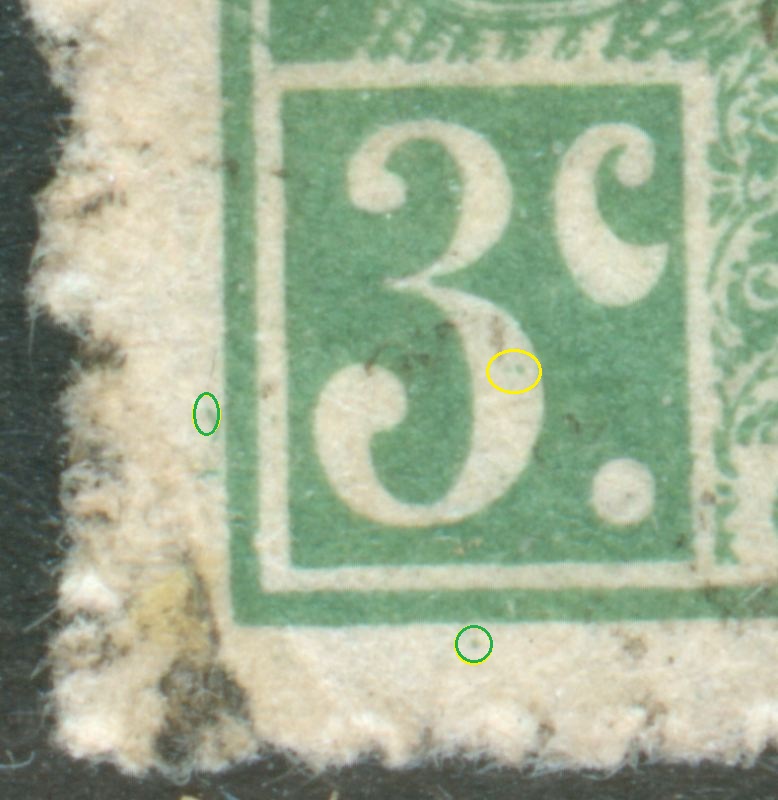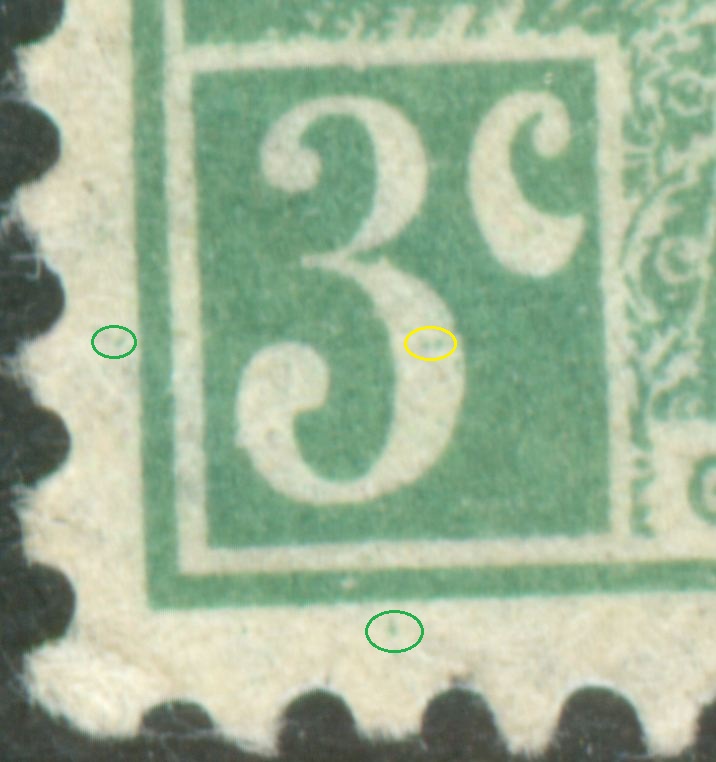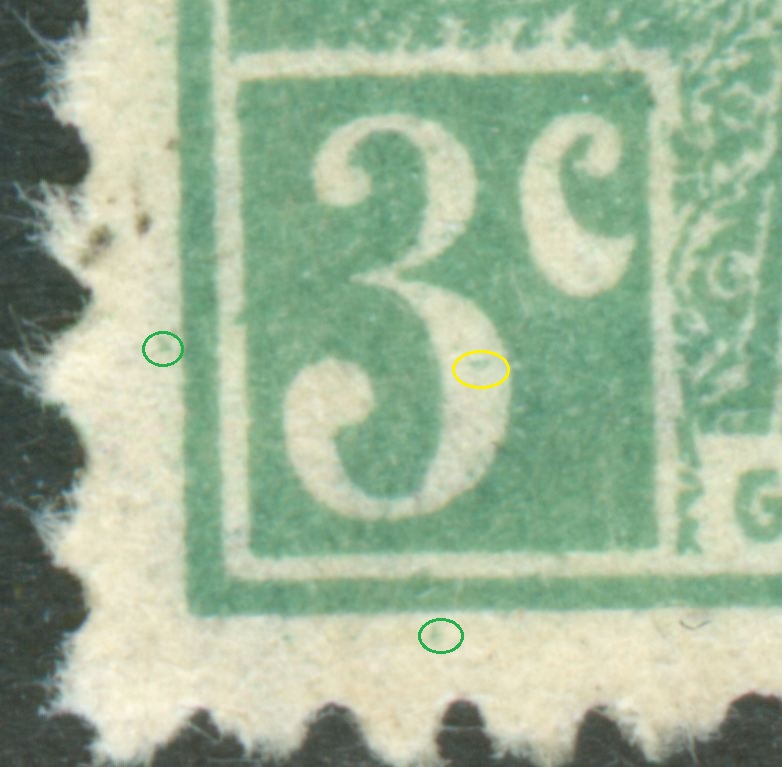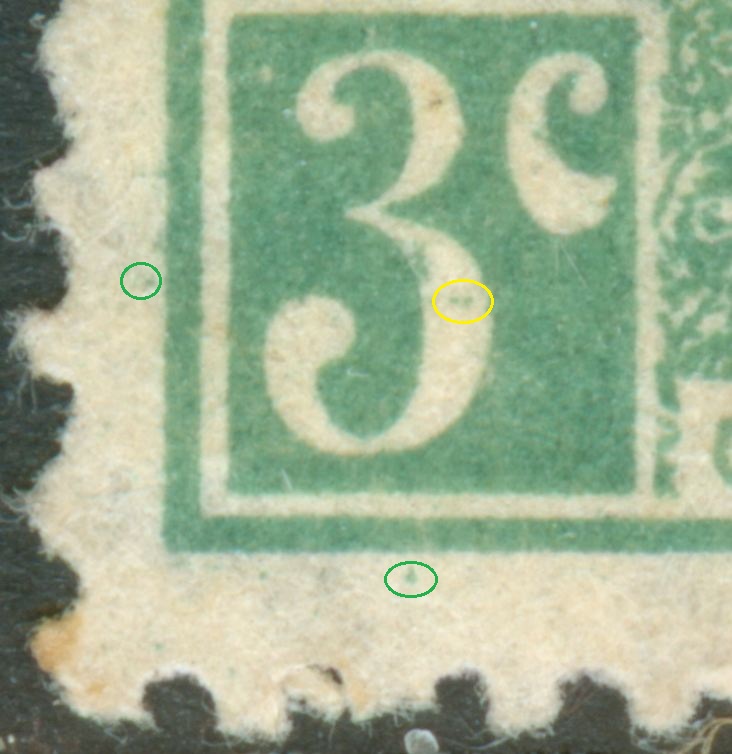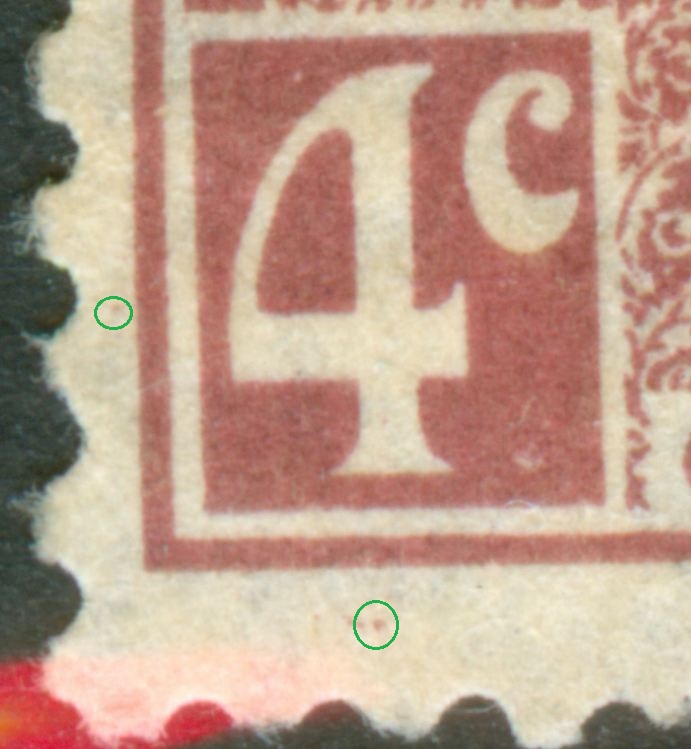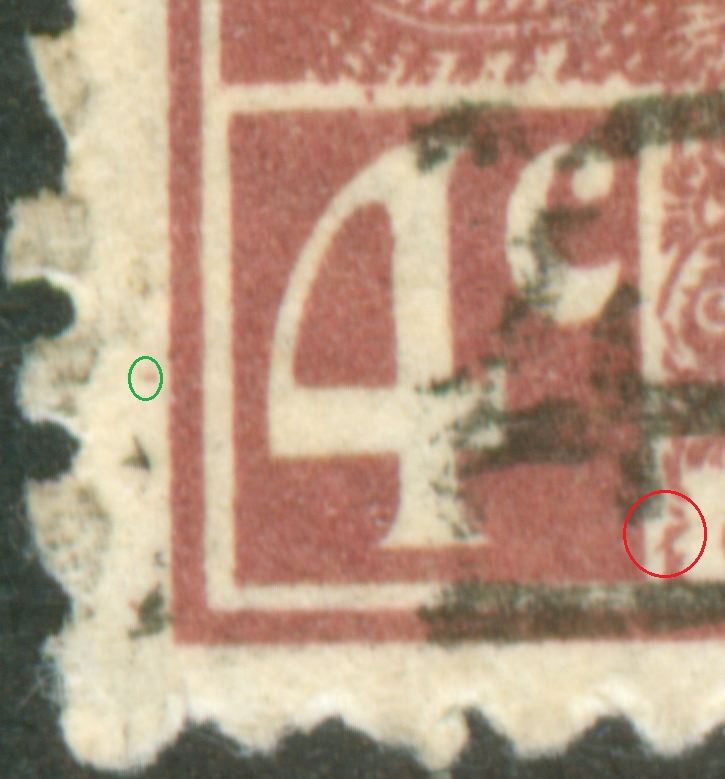Otin escribió:Rein,
In viuw of overwhelming proofs you show I must accept those dots are not there by chance. All are in the SW corner. Concerning the very tiny ones in or out the numbers I think they are just imperfections in the process of reporting the photo-lithos
to the zinc plate, About the sashes they are there but I don`t think they are related to guiding marks. You have scored a strong point.
José
José.
in an earlier posting on the 20c sin punto I came to a conclusion that the root block consisted of 5x5 "stamps". But seeing the frequency of my 12c on Belgian paper: 4 out of 27 AЯ and 1 out of 12 RA (hence 5 out 39 on Belgian) the root block of 5x2 seemed more likely.
Some of the inner dots are part of the original: the dot in the middle of the "2" of "2c" probably is there is all stamps of the root block! Maybe a later root block has lost that dot but I have not studied all of my JSM's in that respect!
For the time being I would not mind assigning these a separate "type": type I of the 2c has the dot in the middle, type II does not have it.....
The same goes for the dots inside the "10" of the 10c! It seems to me that ALL stamps prior to 1930 [!] has them!
And the 3c has the dots for quite some time!
So how did they produce these plates??? They must have made new root blocks for the "sin punto" using an "original" [with its tiny dots!] filling up the big dot and then copying it 5 times horizontally and subsequenty 2 or 5 times vertically???
The "slashes" are certainly not part of the originals with the 2 "guiding dots" as they occur not on every stamp! But they do occur in the "sin punto" as well. Even having the accompanying dots in the 2c! See the previous posting above!
However, in the 12c the slashes are without the scratch in the left margin!
to be continued ...
